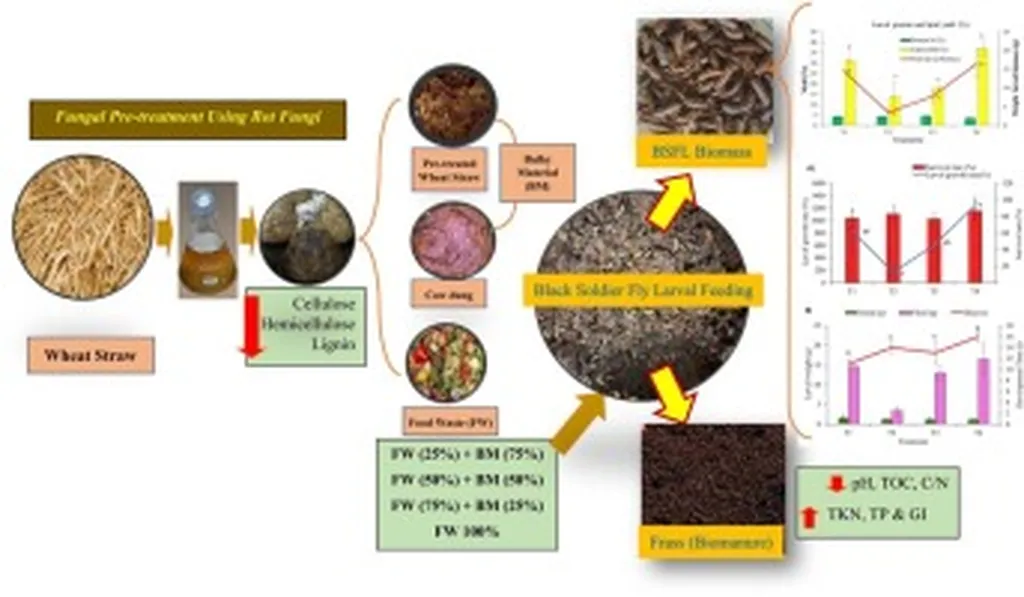In the heart of Türkiye, researchers are unlocking new potential for agricultural byproducts, with implications that could ripple through the livestock and energy sectors. Can Aslan, a dedicated researcher from Kırşehir Ahi Evran University’s Institute of Natural and Applied Sciences, has been exploring the effects of a native Lactobacillus brevis strain on wheat straw silage, and the results are promising.
Wheat straw, often considered a low-value byproduct, could soon find new purpose as a high-quality feed additive, thanks to Aslan’s work. By inoculating wheat straw silage with different concentrations of Lactobacillus brevis (MF098783), Aslan and his team observed significant improvements in fermentation quality, nutritional value, and digestibility. “The reduction in pH values was remarkable,” Aslan notes, “indicating that L. brevis effectively enhanced the fermentation process.”
The study, published in the *Turkish Journal of Agriculture: Food Science and Technology* (Türkiye’de Tarım: Gıda Bilimleri ve Teknolojisi), revealed that silages inoculated with L. brevis at concentrations of 10⁶ and 10⁸ cfu/g showed increased crude protein and ether extract contents, as well as lower fiber values. This translates to higher metabolizable energy and net energy, making the silage a more valuable feed option.
But the benefits don’t stop at nutrition. The inoculated silages also demonstrated superior aerobic stability and microbial control. “We observed reduced yeast counts and no mold growth in the inoculated groups,” Aslan explains. “This is crucial for maintaining silage quality during storage and feedout.”
The implications for the livestock industry are substantial. By enhancing the quality of wheat straw silage, farmers could reduce feed costs and improve animal performance. Moreover, the findings suggest that L. brevis holds strong biotechnological potential as a silage additive, paving the way for further research and commercial applications.
In the broader context, this research could also impact the energy sector. As the world seeks sustainable and renewable energy sources, agricultural byproducts like wheat straw are gaining attention as potential feedstocks for bioenergy production. Enhancing the nutritional value and digestibility of these byproducts could make them more viable for energy applications, contributing to a more sustainable and circular economy.
Aslan’s work is a testament to the power of innovative research in driving agricultural and energy advancements. As he puts it, “Our findings open up new possibilities for utilizing wheat straw and other agricultural byproducts, benefiting both livestock producers and the environment.”
With further research and development, the commercial impacts of this study could be far-reaching, shaping the future of sustainable agriculture and energy production. As the world grapples with the challenges of climate change and resource depletion, such innovations offer a glimmer of hope and a path forward.

